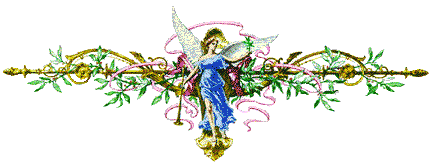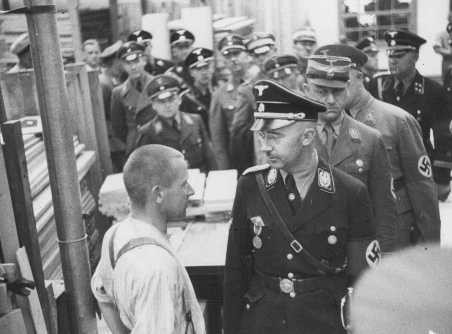All about the Holocaust

TW!!
this page mentions abuse, sexual abuse, violence, antisemitism, trauma, starvation, and N*zi ideology. If any of this triggers you, please leave this page!
What is the Holocaust?
----
The Holocaust was a genocide of Jewish people taking place in countries across Europe during the 1940s.
Background
----
On January 30, 1933, Hitler rose to power as Chancellor of Germany, appointed by President Paul von Hindenburg. Along with him came the party he led, the National Socialist German Workers’ Party, also known as the N*zis. The N*zis were openly antisemitic, antidemocratic, and anticommunist. The party started in the 1920s and was described as "small, ineffective, and marginal," according to the Holocaust Encyclopedia. They gained national attention in November 1923 after trying (and failing) to violently overthrow the Weimar Republic government.
In the early 1930s, the N*zis campaigned hard in local, state, and national elections. They promised jobs, a fixed economy, stronger government, and to make Germany a European power again. They also wanted to regain lost territory. Their promises sounded a lot like someone who looks like a tangerine we all know... They blamed Jewish people and communists for Germany’s loss in World War I. They promised to exclude those groups and "unite" the rest of Germany. The Nazi Party’s growing success in elections made it harder for anyone to govern Germany. Hitler and the Nazis refused to cooperate with other political parties and insisted that Hitler be made Chancellor. At first, President Paul von Hindenburg pushed back against this demand. But eventually, he gave in and appointed Hitler as Chancellor on January 30, 1933. Hitler didn’t immediately become a dictator; instead, he worked on destroying the democracy by using their own laws against them and twisting them to fit his dictatorship better. In August 1934, President Paul von Hindenburg passed away. Soon after, Hitler took advantage of the moment and combined the roles of President and Chancellor, declaring himself Führer, which means “leader.” This gave him complete control over the German government and military. No longer just a political figure, Hitler had officially become the dictator of Germany, with no checks on his power. From then on, the Nazi regime had full control over the country.
Hitler's Regime
----
After Adolf Hitler became Chancellor of Germany in January 1933, he acted quickly to transform the country into a one-party dictatorship and to build the police forces needed to enforce Nazi policies. He convinced his Cabinet to declare a state of emergency, which led to the suspension of individual freedoms such as freedom of the press, speech, and assembly. People lost their right to privacy, allowing officials to read their mail, listen to telephone conversations, and search private homes without needing a warrant. Hitler also used terror as a tool to maintain control. Attracted by wages, a sense of belonging, and the striking uniforms, tens of thousands of young unemployed men joined the Nazi Storm Troopers, known as the SA (Sturmabteilungen). These men acted as unofficial police on the streets, attacking and sometimes killing opponents of the Nazi regime. The mere presence and threat of the SA intimidated many Germans into silence, even those who did not support the Nazis.
One of the key instruments of terror used by the Nazis was the Schutzstaffel, commonly known as the SS. Originally formed as a small unit tasked with protecting Adolf Hitler and other top Nazi leaders, the SS evolved into a much more powerful and influential organization. Its members, dressed in distinctive black uniforms, were considered an elite force. Over time, they took on a variety of roles, including serving as auxiliary police officers and acting as guards in concentration camps. By 1934, the SS had surpassed the Storm Troopers (or SA) in influence and authority, eventually becoming the private military force of the Nazi Party.
The leader of the SS, Heinrich Himmler, played a crucial role in transforming Germany's official police forces into instruments of Nazi terror. Under his leadership, the non-party police were brought under the control of the Nazi regime. Himmler was also responsible for helping to create the Secret State Police, known as the Gestapo. The Gestapo operated in plain clothes and became notorious for their brutal tactics. They used fear, surveillance, and violence to identify, arrest, and silence anyone who opposed the Nazi regime or failed to follow its rules.
In the early months after Hitler rose to power, members of the SA and Gestapo began carrying out raids across Germany. They went from house to house searching for individuals who were considered enemies of the Nazi Party. These included socialists, communists, labor union leaders, and others who had previously criticized or resisted Nazi ideas. Many of those arrested were never seen again, and some were executed without any form of legal process. By the middle of 1933, the Nazi Party had banned all other political parties, and virtually every form of organized resistance was destroyed. As a result, democracy in Germany came to an end.
Various Nazi groups, including the SA and SS, established hundreds of detention sites in Germany. These makeshift facilities were often located in abandoned warehouses, factories, or other buildings, and they were used to imprison political dissidents without trial. The conditions in these early camps were extremely harsh and inhumane. One of the first and most notorious camps was opened on March 20, 1933, in Dachau, just outside Munich. It was built inside an old munitions plant from the First World War. Dachau became the prototype for the extensive system of concentration camps that would later be managed by the SS across Germany and Nazi-occupied territories.

Nazi propaganda and censorship
----
The Nazis aimed to ensure that all Germans supported their dictatorship and accepted their beliefs. To achieve this, they worked to control nearly every form of communication they had. They used both censorship and propaganda to shape public opinion and eliminate opposing viewpoints. This control included newspapers, magazines, books, artwork, theater, music, films, and even radio broadcasts. By tightly regulating what people could read, see, and hear, the Nazi regime created an environment where only their ideas were heard, and other opinions were erased. When the Nazis took control of Germany in 1933, the country still had a constitution that protected civil rights like freedom of speech and freedom of the press. However, the Nazi regime quickly began to dismantle those freedoms. By passing a series of decrees and laws, they eliminated these rights and brought an end to democracy in Germany. By 1934, it became illegal for anyone to criticize the Nazi government. Even something as small as making a joke about Adolf Hitler was treated as a serious crime, often labeled as treason. In Nazi Germany, people no longer had the right to express their opinions openly. Speaking or writing freely could lead to arrest or worse.
That's it for tonight
